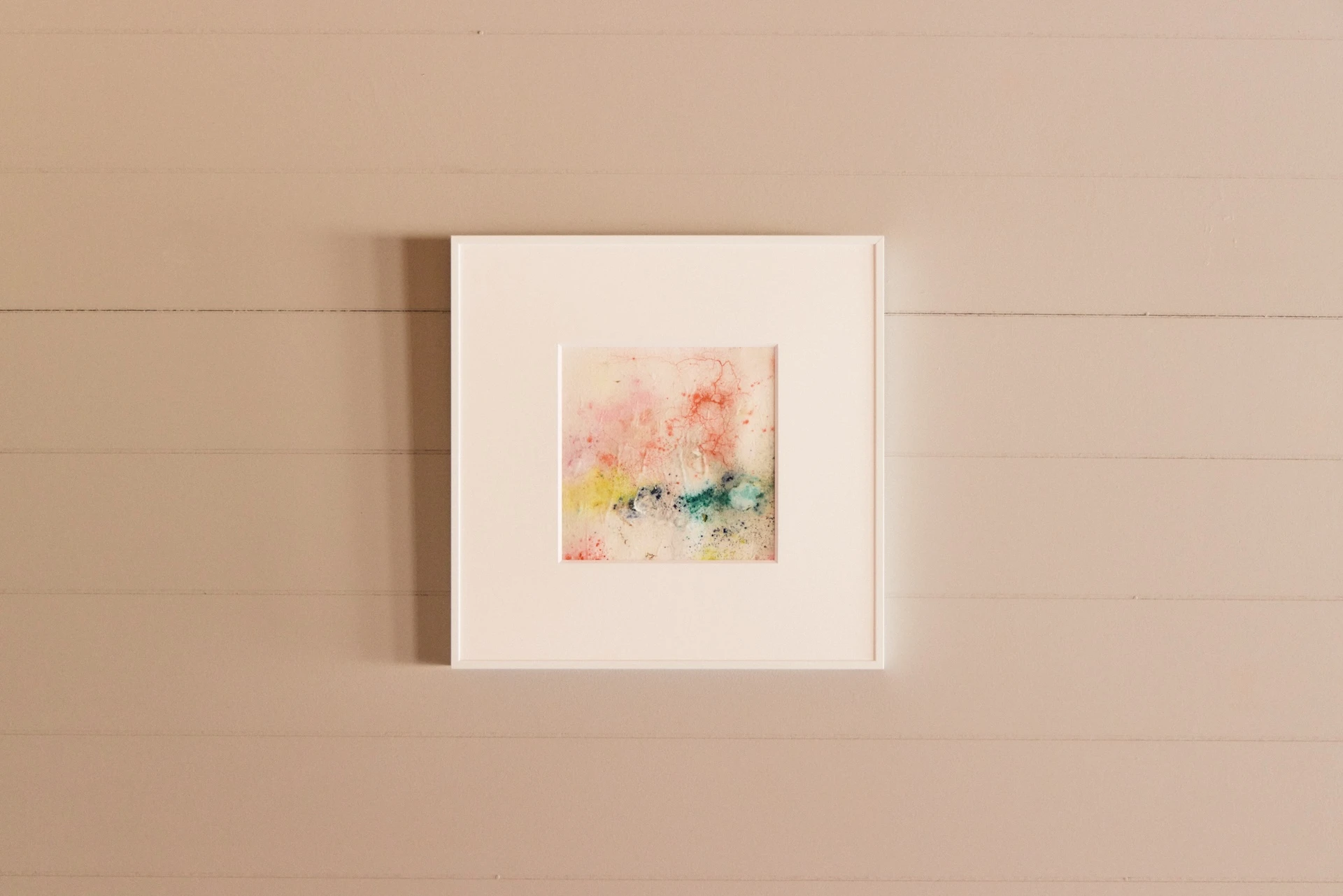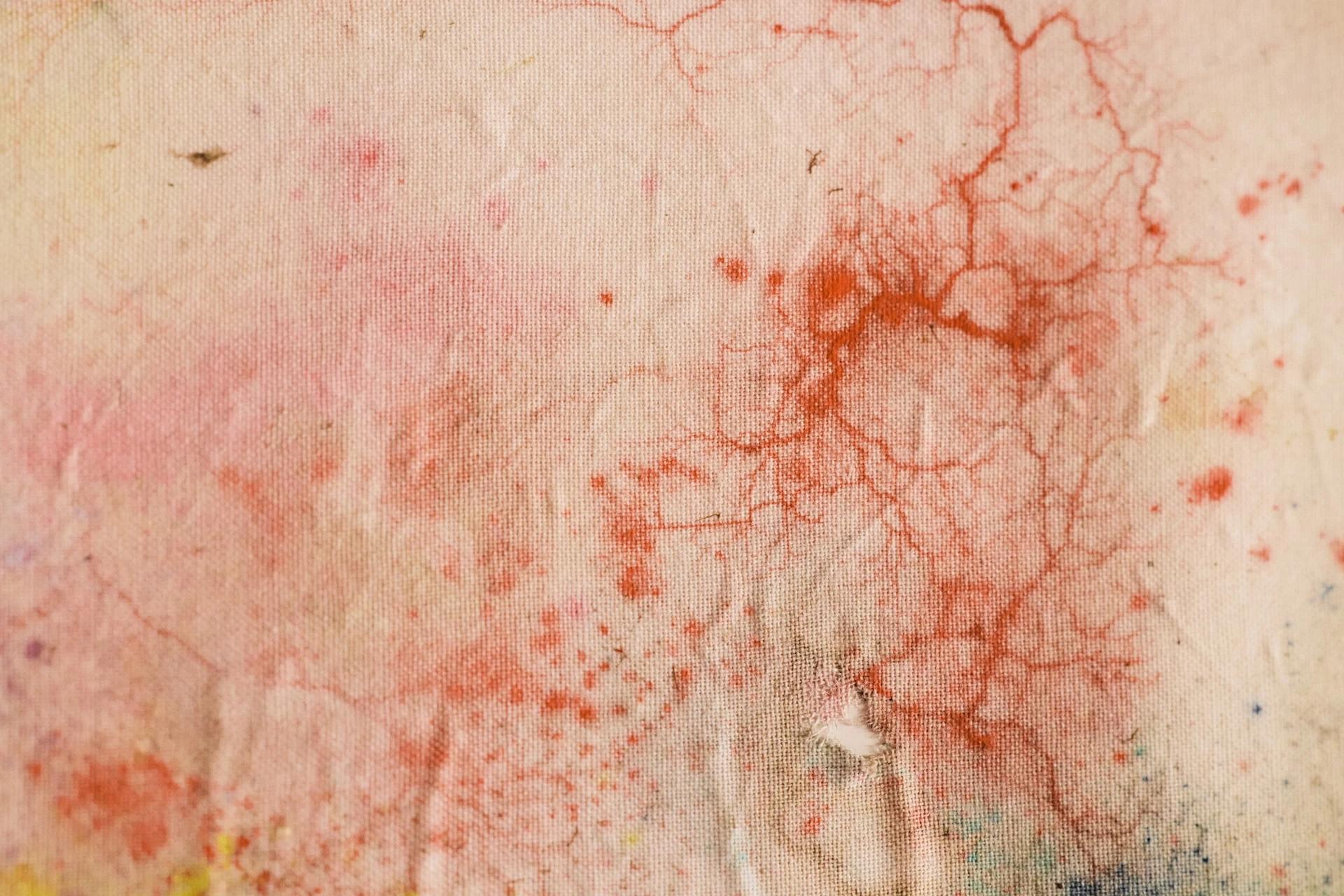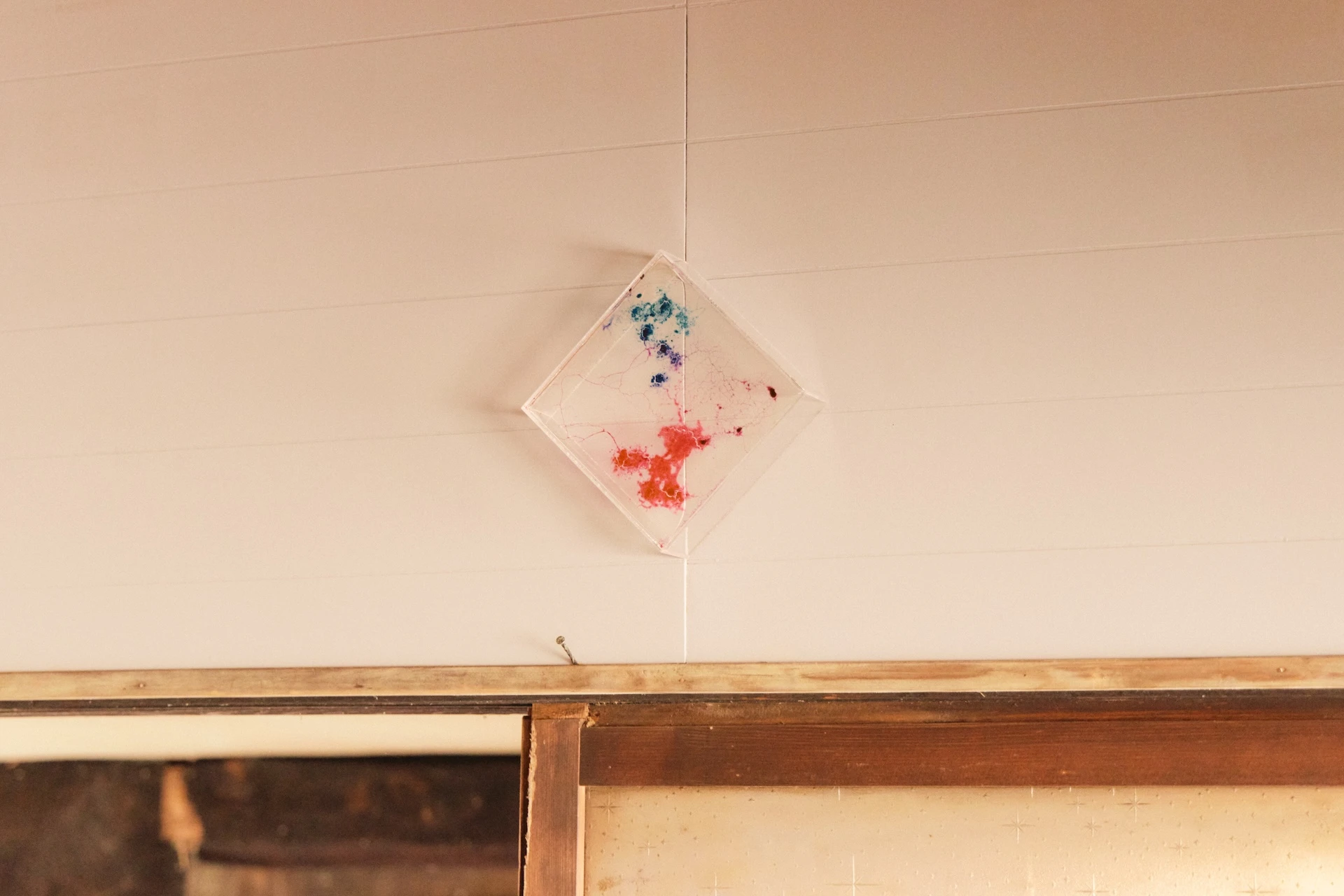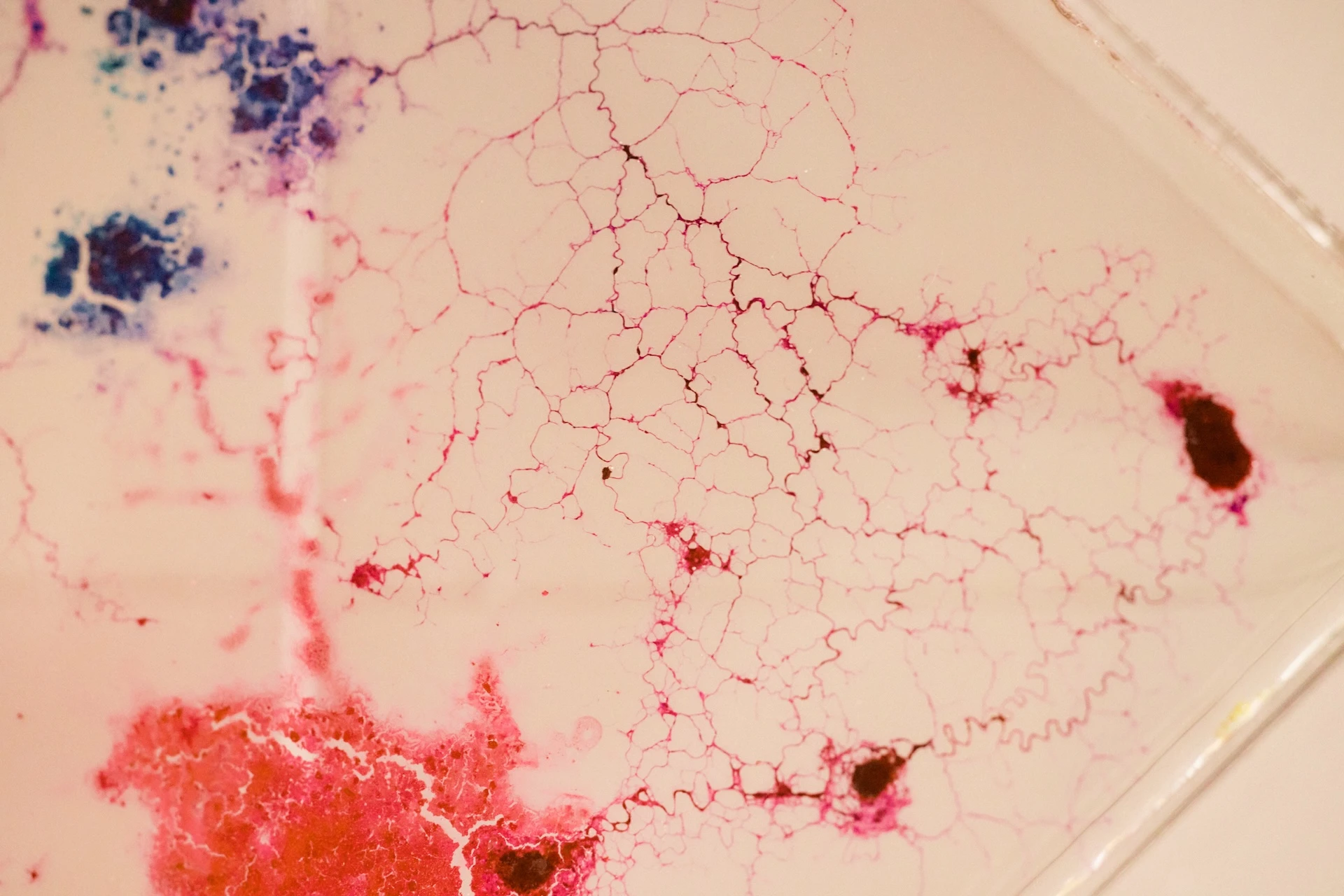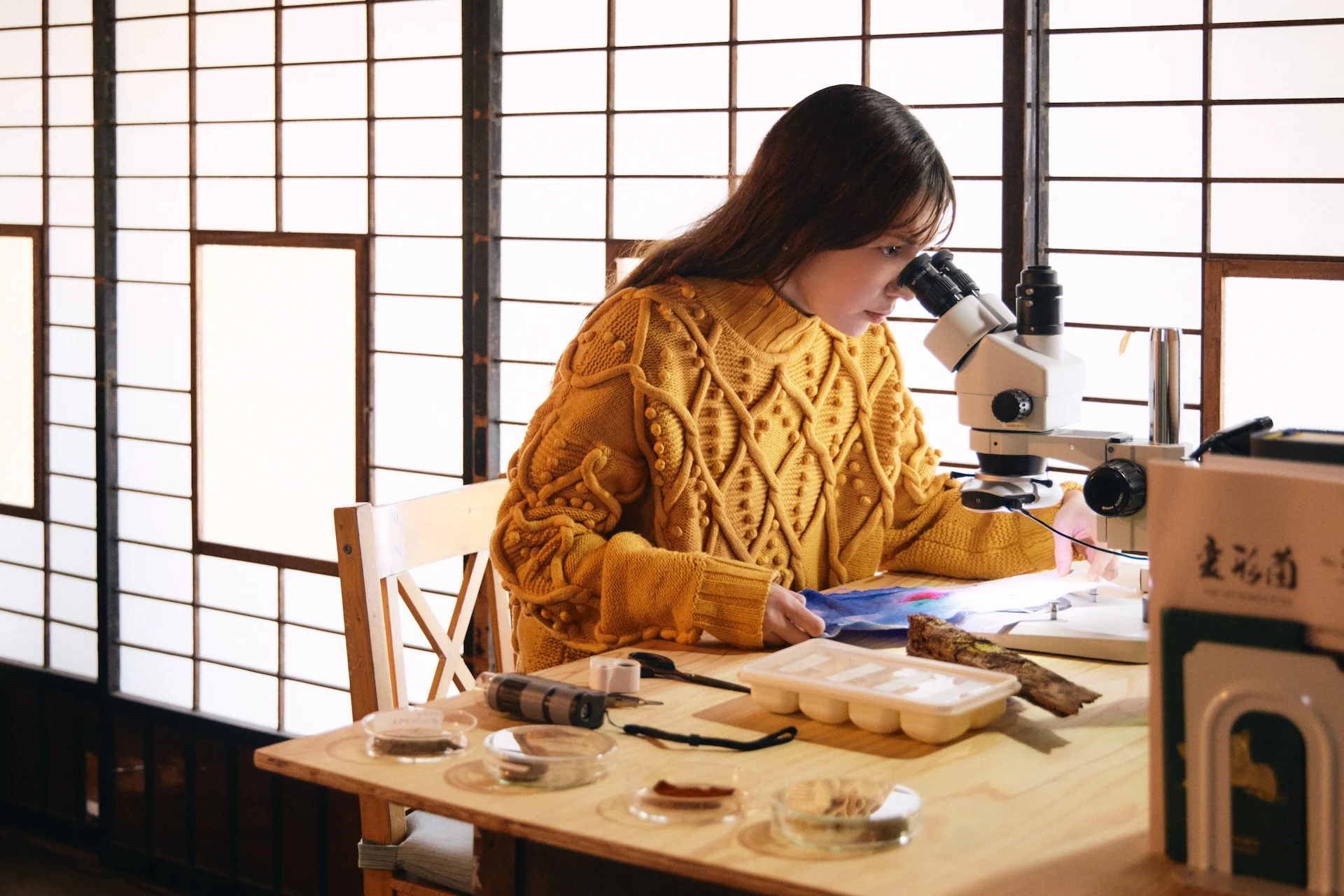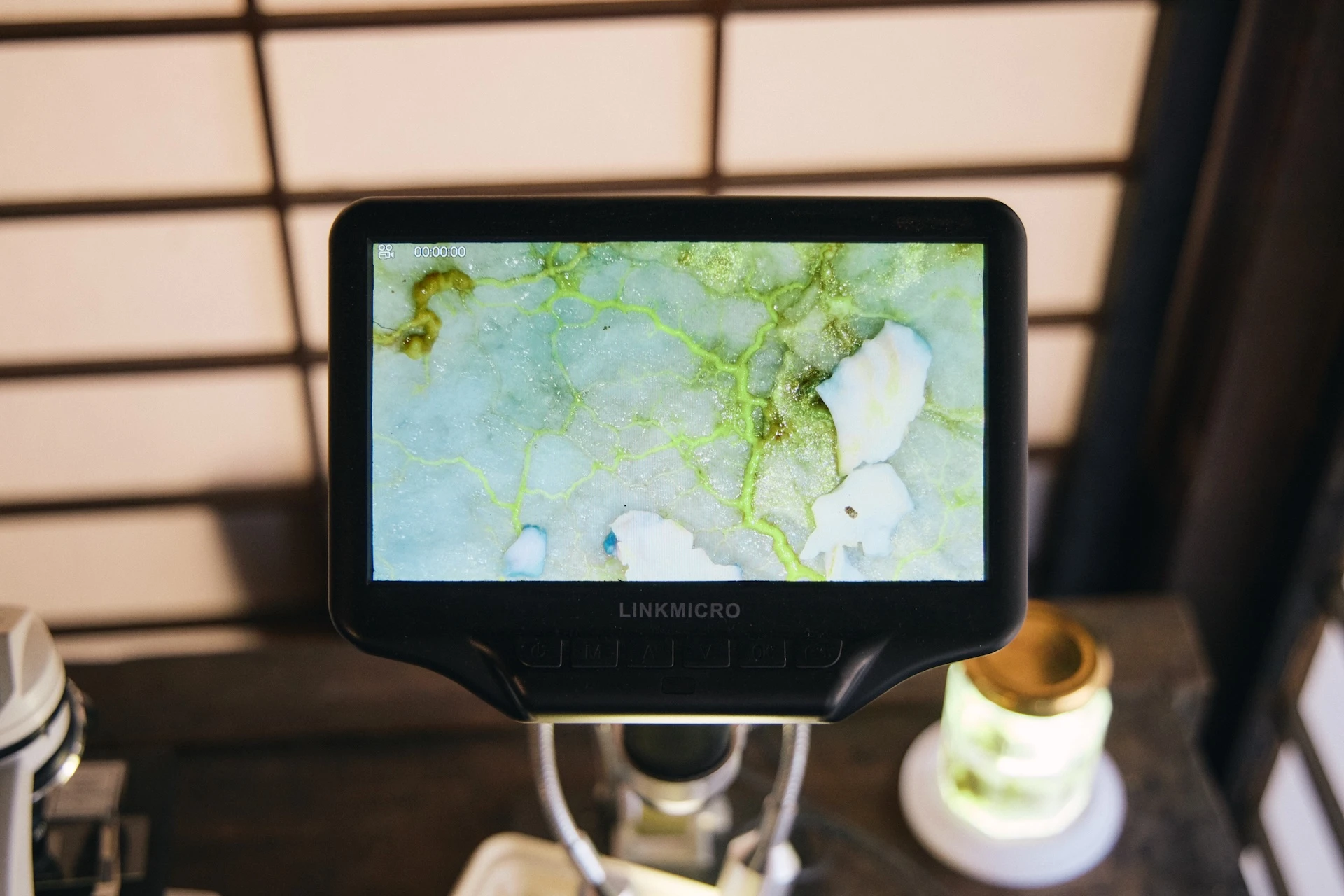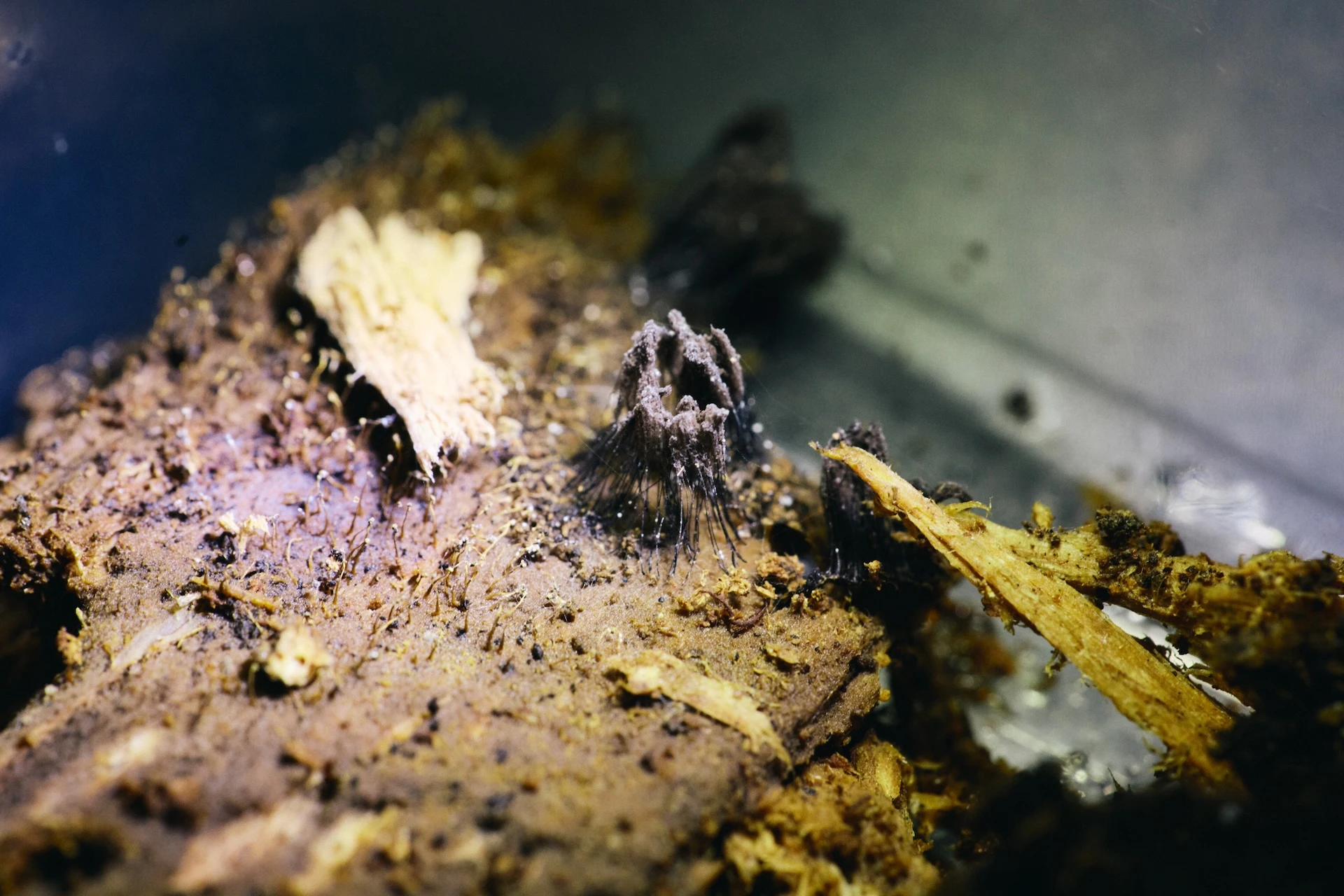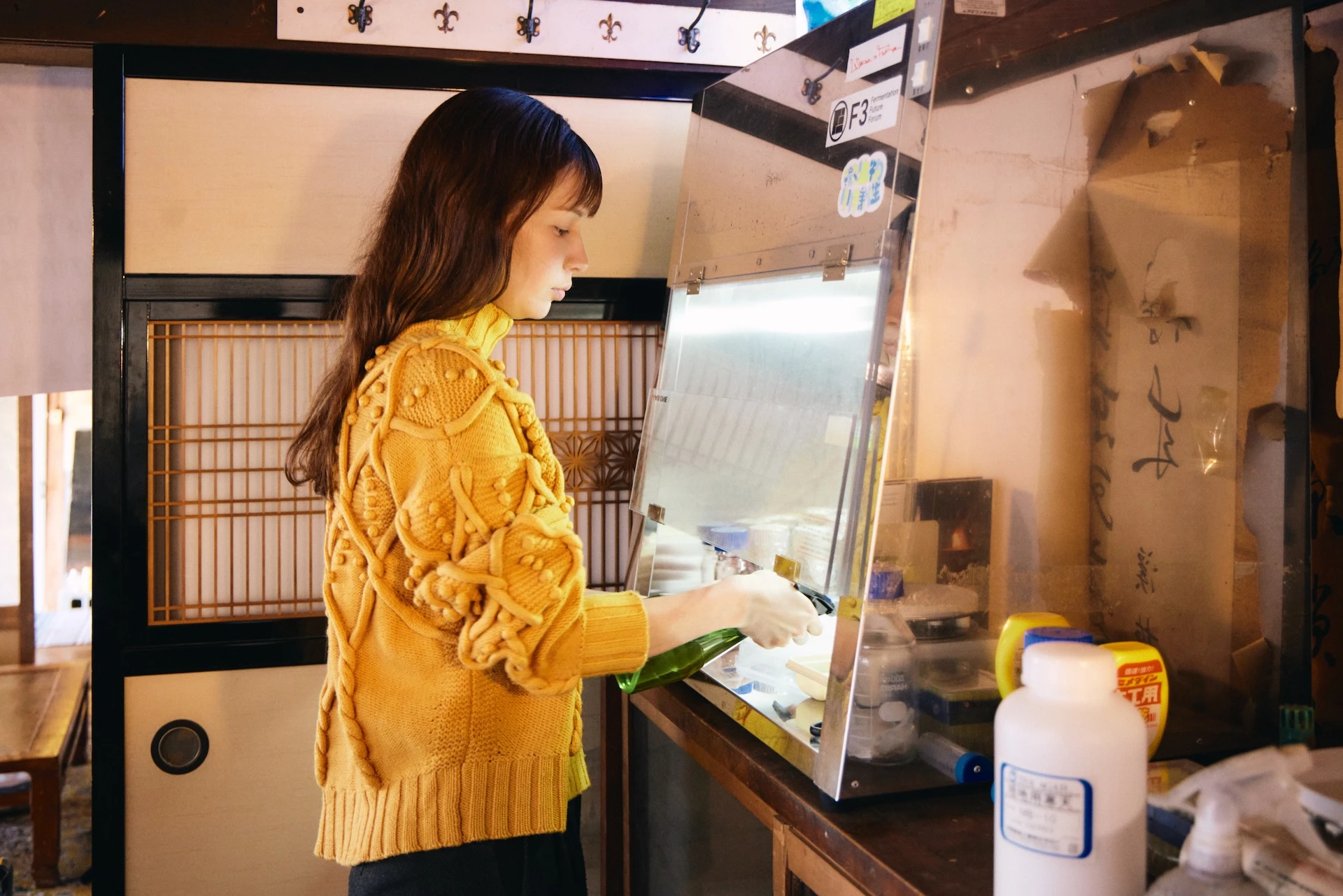JUNKAN Museum
“JUNKAN”: A Creator’s Vision.
Exploring “JUNKAN” through Varied Perspectives, Ideas, and Expressions.
Contemporary Artist
Hanna Saito
10/11
Slime molds, tiny creatures found throughout nature, offer a fascinating glimpse into the hidden workings of ecosystems. These organisms exist in two forms: the dynamic, amoeba-like plasmodium, which actively moves in search of food, and the static, spore-producing fruiting body, formed for reproduction. Unlike bacteria, which are invisible without a microscope, slime molds can be observed clearly with the naked eye. Often overlooked, they thrive abundantly in natural environments, feeding on microorganisms such as bacteria. Once you start noticing slime molds, you’ll find they’re surprisingly common, quietly inhabiting forests and natural landscapes around us.
My practice involves collecting and observing slime molds, transforming the beautiful trails they leave behind into works of art. Slime molds move continuously, consuming and expelling nutrients as they travel in search of food. Recently, I’ve begun experimenting with these organisms as a medium—not just artistically, but also as a potential material for textiles or other practical products. Currently, I’m collaborating on experiments aimed at turning slime mold trails into sustainable textiles. Although slime molds may seem insignificant or irrelevant to our daily lives, their intricate movements and delicate patterns echo larger universal principles found in plants and other organisms. They inhabit a niche yet possess universal beauty—a unique combination that forms the core of their appeal.
Slime molds exhibit strikingly diverse characteristics and behaviors. Some thrive on very particular nutrients, so I’ve experimented by feeding them unusual substances like pigments or metals, which has led to fascinating discoveries. Through these experiments, I've learned that each individual slime mold has distinct dietary preferences, enabling me to explore how different substances—including pigments and metals—influence their growth and movement patterns. For instance, by providing slime molds with metallic pigments, unexpected insights emerge. Such experiments can reveal previously invisible aspects of an environment—such as how certain slime molds respond uniquely to specific metals. This opens a fascinating perspective, where slime molds become a lens through which we see hidden facets of our world. Ultimately, my hope is to build upon these artistic observations and experiments, leading to contributions not only in art and design but also potentially to scientific publications and interdisciplinary research in the future.
Some may perceive bio-art as existing at the intersection of science and art, but I’ve always viewed these two fields as fundamentally interconnected. Through my slime mold artworks, I aim to demonstrate how naturally these fields blend into each other. By highlighting slime molds—creatures seemingly distant from human experience—my goal is to bridge the gap, making their fascinating behaviors more accessible and relatable through artistic expression. Western thought often distinguishes strictly between “nature” and “culture,” yet visualizing slime molds helps us to empathize with and better understand these hidden aspects of the natural world.
Currently, I’m living in a partially renovated traditional house nestled near a mountain. Surrounded by abundant nature, it’s an ideal environment for collecting slime molds and pursuing creative work. By moving closer to nature, my aim was to better understand where the materials we use come from and how they eventually return to the earth after being discarded. In modern life, where mass production and consumption obscure the origins and ultimate fate of everyday objects, this proximity to nature has heightened my awareness of how materials circulate within the environment. By visualizing and clarifying these often-invisible connections, I believe we can find valuable insights into solving the environmental problems we face today.
Through my work—whether by repurposing overlooked materials, repairing existing items, or highlighting natural cycles—I hope to spark conversations and inspire meaningful actions toward sustainability.
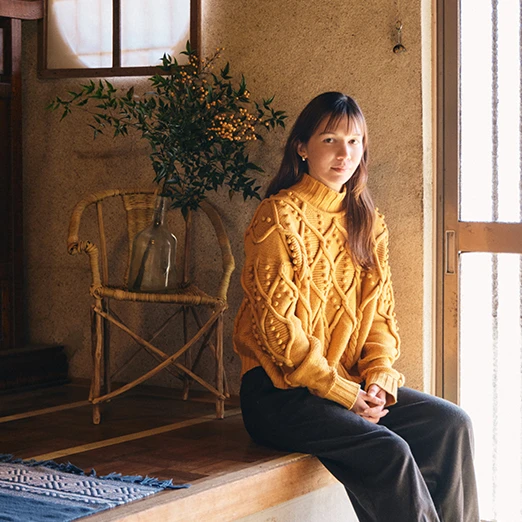
Graduated from Musashino Art University’s Department of Industrial, Interior and Craft Design in 2010. Began working with contemporary jewelry and conceptual design, then expanded her practice through collaborative projects in Europe and Japan. Her recent works explore sustainability and the boundary between nature and artifice, integrating experimental processes and materials. Currently enrolled in the doctoral program at the Graduate School of Interdisciplinary Information Studies, the University of Tokyo (Yasuaki Kakehi Laboratory). She creates artworks using scientific glassblowing techniques, biological materials, organic substances, and image analysis. Her artistic research focuses on visualizing invisible connections between humans, nature, and technology, and emphasizes the inseparability of creators from their subjects.
Let’s Share!
Do you want to be a part of “JUNKAN” ?
Share your Monthly JP pavilion,
and circulate your thoughts.
Related Artist
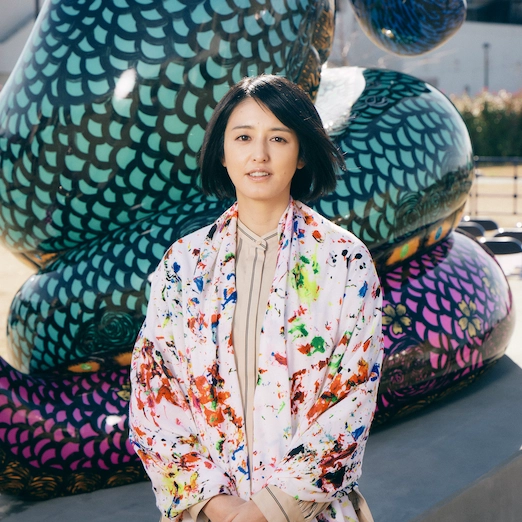
1/11
Artist
Miwa Komatsu

2/11
Artist/Plant Director/Doctor (Agriculture)
Mikiko Kamada
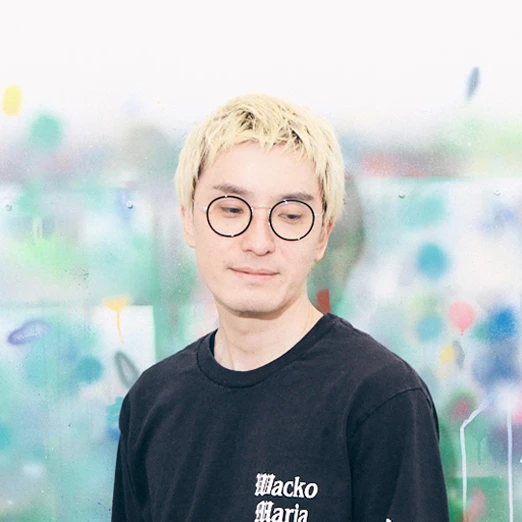
3/11
Artist
Hiroki Niimi

4/11
Photographer
Shinichiro Shiraishi
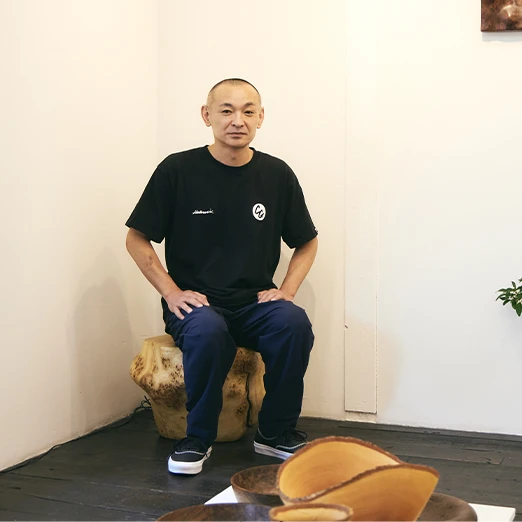
5/11
Artist
Shoji Morinaga
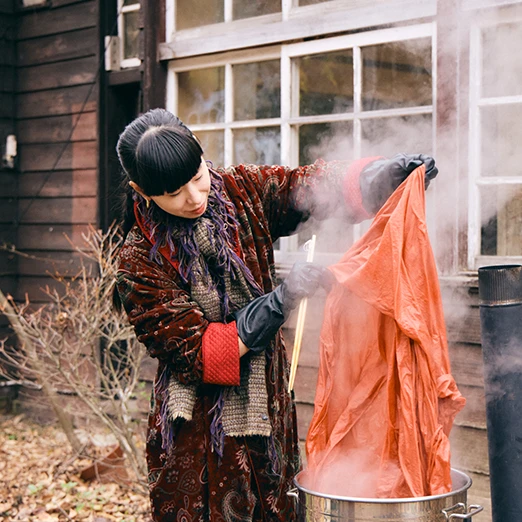
6/11
Plant Dyeing Artist
Misaki Ushiozu
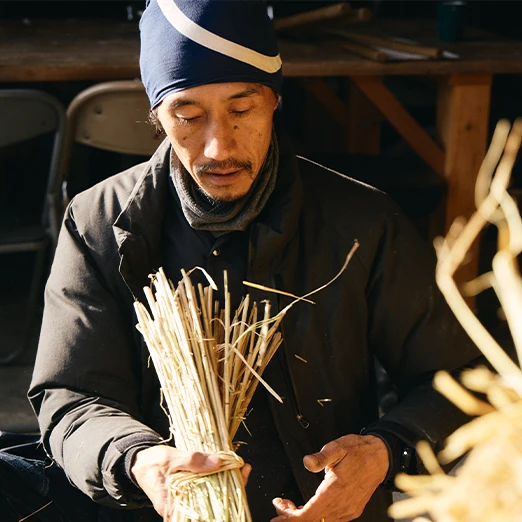
7/11
Thatch Craftsman
Ikuya Sagara

8/11
Artist
Moeko Yamazaki
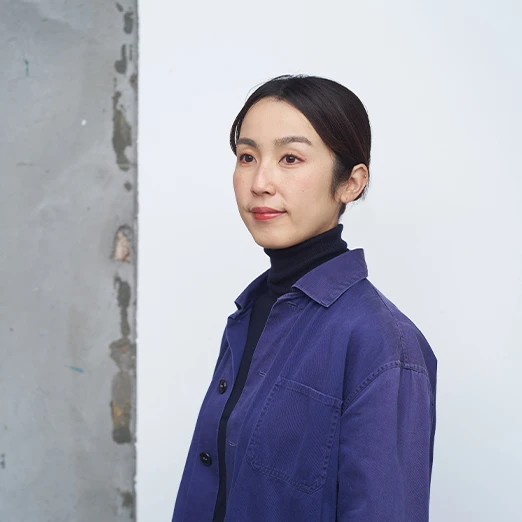
9/11
Designer / Artist
Sae Honda
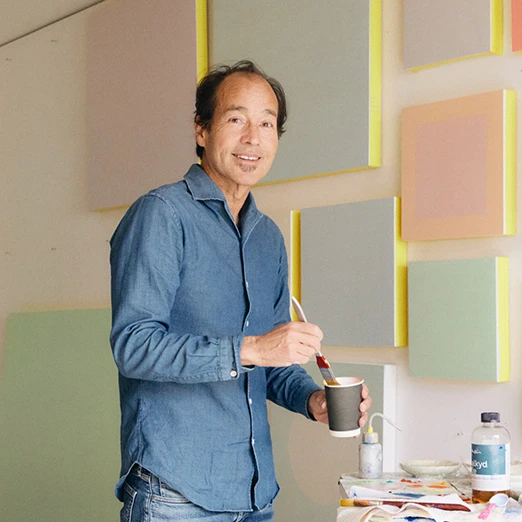
11/11
Abstract Painter
Shingo Francis
